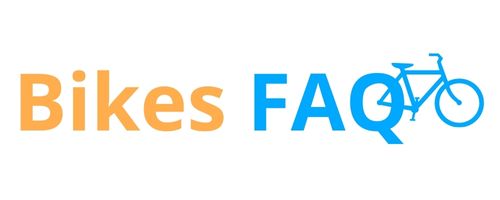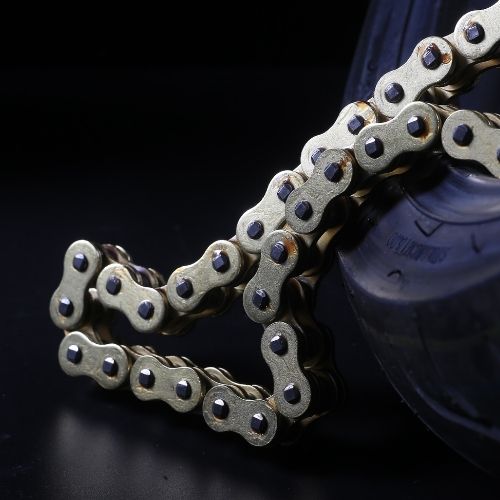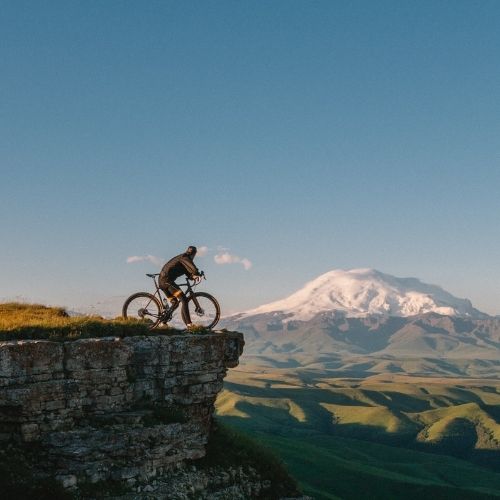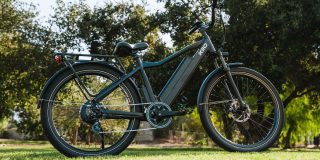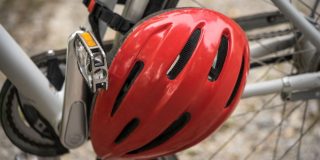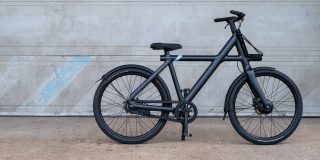While it’s easy to get lost looking at all the new gadgets and upgrades you could get for your trustee mountain bike, what’s not easy is usually the price tag that comes with it. That’s why in this article we’ll be covering the 6 best mountain bike upgrades that’ll keep your bike in great condition and keep you from crossing that triple-digit line.
So what are the top 6 upgrades that you can buy for under $100? The top upgrades for mountain bikes under $100 would be a new set of pedals, tires, handlebars, bike stem, a chain guide, or possibly upgrading your wheels to tubeless. However if you have an older bike that has been ridden hard, the thing that can make the biggest difference is getting a professional tune-up on your bike.
| What you need | The Solution |
|---|---|
| Mountain Bike Pedals | ROCKBROS MTB Pedals |
| Mountain Bike Tires | Maxxis Cyclone |
| Mountain Bike Handlebars | Wake MTB Riser Handlebar |
| Bike Chain Guide | BESNIN Chain Guide |
| Mountain Bike Stem | Wake Short Handlebar Stem |
1. Mountain Bike Pedals
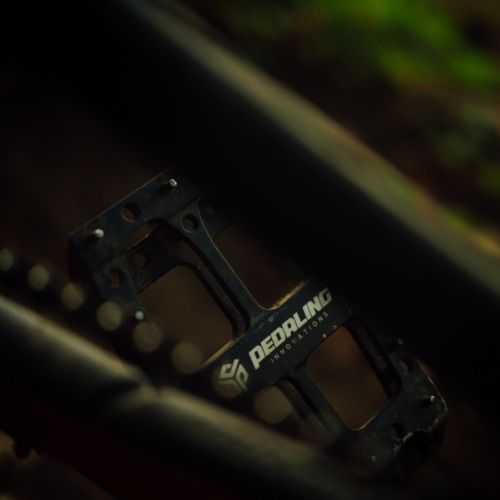
An often overlooked important component to keep your bike in great condition is a fresh set of pedals. Whether you’re riding clipless or flats, wearing out is eventually inevitable, so the best way to prevent this is with a good new pair of pedals to keep your bike riding as well as it can!
Being a contact point for your bike it is naturally very important for this component to not only be as comfortable as possible but also as safe and reliable as possible. However, you can easily catch yourself spending more than a hundred bucks on new pedals, but at the expense of just a few grams, you should have no problem finding a strong, comfortable fit for your bike well under $100.
The reason bike pedals make this list is that they’re often overlooked, but as a contact point, their comfortability can make a world of difference for you and your ability to ride. You may find you can’t ride as much as you want to or could, because of just how irritating your pedals might be.
What separates this from many other selections on this list is that this has much more to do with your comfortability, versus control. The more comfortable you are when riding, the more you can ride! The prices range wildly on the average price for bike pedals, but you can expect to see anywhere from 40-90 bucks when looking.
ROCKBROS MTB Pedals Mountain Bike Pedals – Our Recommendation
Rockbros pedals are a perfect choice for your recreational MTB rides. Their new durable and muscle family design withstands the hardest hits without complaint. The wider 4-inch platform ensures better balance and stability, providing you with a more comfortable ride while reducing joint fatigue to some extent.
Above all, Rockbros peddles feel extremely lightweight on rides that last over 10 miles when you need to maintain an efficient pedal stroke without feeling weighed down or tired out from long hours of riding. They provide excellent grip for quick starts and stops in tricky terrain, thanks to its sophisticated high precision engineering desig
2. Mountain Bike Tires
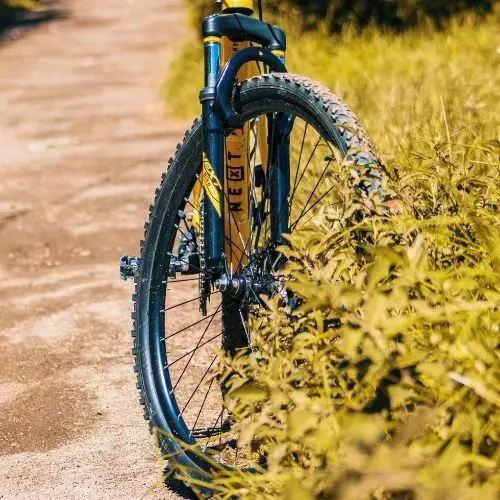
The right tires for your mountain bike are especially important to your area and terrain. Often, people find that they’ve bought the wrong kind of tire for their specific environment, leading to bumpier rides and more worn down tread than is expected.
However, even if you’ve got the right kind of tires for your bike, wear and tear can’t be avoided, eventually, the time’s just going to catch up with your bike and the tread is going to wear down. This is why it’s always important to make sure you either have good tires for your terrain or if they’re wearing down, make sure you’re getting yourself some fresh tires.
This is another upgrade however, that could easily put you in the hole for over $100 if you aren’t careful. But if you can shop closeouts, or aren’t committed to the lightest tires on the market, finding solid tires that are durable, and fit your specific terrain under $100 is perfectly possible and definitely recommended.
Cyclone Maxxis CrossMark Mountain Bike Tire – Our Recommendation
The Maxxis CrossMark is a fast-rolling all mountain tire that features ramped side knobs for excellent traction when cornering, plus raised side knobs for better overall performance.
The special design of the plies gives this tire excellent stability and low rolling resistance while still being light weight.
3. Mountain Bike Handlebars
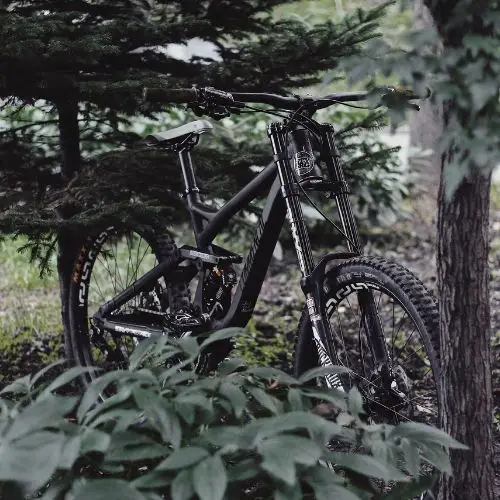
When we’re talking about good upgrades on a budget, we can’t afford to not mention the usefulness of tossing your stock handlebars and opting out for something more comfortable, and applicable to your terrain.
Handlebars help control maneuverability and the overall control of your mountain bike. Making them especially important to the safety of your riding. As we mentioned earlier, your specific terrain is very important, and being able to control your bike on that terrain is even more important.
This is why making sure your handlebars are custom to your comfortability is essential. Another few things, aside from price, that you’ll want to consider are the bar width, clamp diameter, and rise and sweep.
Handlebars offer a unique control over your bike, they contribute to the overall feel and the ability to maneuver that your bike has. For this reason, they make it on the list as one of the most important upgrades for your bike needs.
On average, one of these will run you just anywhere from 40-80 bucks, with some on the lower end being available for 10-20 bucks. But always remember, you get what you pay for!
Wake MTB Riser Handlebar – Our recommendation
Wake MTB Riser Handlebar – Made of high-strength aluminum alloy 6061 and non-slip rubber for durability, the handles are supremely lightweight and incredibly strong. Designed with professional ergonomics for addition control over your bike, they are compatible with variety of bikes including mountain bikes and dirt bicycles.
These handlebars can be sizes anywhere from 30mm to 31.8mm clamp diameter as well as 740mm to 780m in length with a 22.2mm rise height; making them versatile enough to suit any biking occasion!
4. Mountain Bike Stem
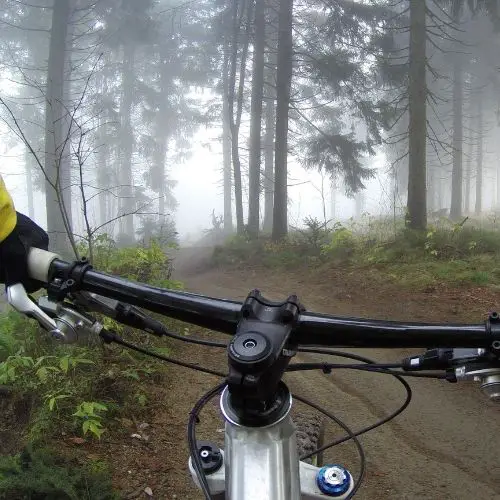
Another component that has a lot to do with the overall control and maneuverability of your bike is your bike stem. If you have a shorter mountain bike stem then you’re going to be able to get a quicker response and better control over the front end of your bike.
This is especially important for downhill bikes that will usually have a super short stem (40-50mm). So when looking for your new bike stem, keep in mind that what kind of riding you’re doing matters the most.
Another important factor to keep in mind is that if you’re paying for carbon, then you’re probably going to have to cross that triple-digit mark because, well, carbon is expensive!
Like handlebars, bike stems offer you a sense of security with the fact that they contribute to the overall feeling of control you have over the bike. This is why they also make it onto the list.
Considering that when riding a bike, one of the most important aspects is how it feels to you, the right bike stem could make a world of difference for a bike you haven’t felt is as secure as it needs to be.
The average price for a bike stem is anywhere from 50-100 dollars, excluding carbon of course, which could run you anywhere from 100-250 bucks per stem.
Wake Short Handlebar Mountain Bike Stem – Our Recommendation
If you’re looking for a stem that’s easy to install, lightweight and comfortable the Wake short handlebar mountain bike stem is just what you’re looking for.
This sleek metal tube attaches your front fork to your handlebars with four bolts and feels smooth as silk in your hands. Tension can be adjusted easily by spinning the dial on its threaded head bolt.
The universal short handle bar stem is also compatible with most bikes – if you need help compatibility or installation, please contact our friendly customer service team who’ll be happy to help!
5. Bike Chain Guide
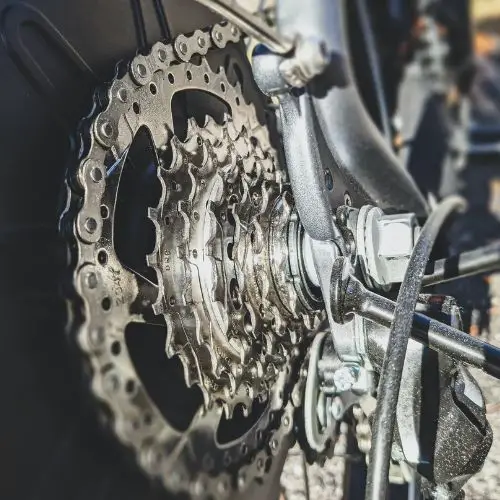
While a chain guide is not necessarily essential to your bike. It’s an upgrade that can save you a lot of frustration if you find yourself stopping trailside often to have to fix your dropped chain.
This small, reasonably priced upgrade could save you hours of sitting on the trailside. As the name states, a chain guide guides your chain so you don’t have to worry about a possible dropped chain or two every time you go out to ride.
The average price of one of the little gadgets comes in around 10 bones, which, definitely is worth the time spent saying not-so-nice words at your bike because your chain keeps dropping.
BESNIN Chain Guide Mountain Bike Chain Guide – Our Recommendation
The BESNIN Chain Guide Mountain Bike Chain Guide is a small version of the traditional touring chain guides. The guide firmly fixes on your bicycle`s top and bottom drive rings, which help you to avoid dropped chains completely! With a light weight of only 52g, it provides convenience for cyclists to shift gears efficiently and safely.
The anti-rust design coupled with durable ABS materials ensures that this will be practical bicycle accessory for many years. Its simplistic yet fashionable tone make it perfect for those looking to add some style to their bike while also increasing its lifespan.
6. Go Tubeless

People often debate between going tubeless or not, depending on where you live, you may not have much of a choice.
For Colorado riders, going tubeless is something that’s often less of a choice and more of a required adjustment to the terrain.
Whether it’s sharp little rocks or some cacti, flats are inevitable in rougher terrain. So, if all it takes is a painless, affordable transition to cut your number of flats by a big portion, I say, why not?
Now, while the make and model of your bike do have quite a bit to do with the price of these tires, on average, you’ll see yourself running anywhere from 30-40 bucks per tire for your new tubeless setup.
NoTubes Tire Sealant – Our Recommendation
Outside of tires, you need to make sure you have tire sealant when going tubeless. This NoTubes Tire Sealant instantly seal punctures up to 1/4″ (6.5 mm) with our liquid bike tire cure, then let it harden overnight for a guaranteed flat tire prevention. There’s no more time-consuming stop and fill.
Simply pour out the correct amount of product, insert it through the removable valve stem core and wait 5 minutes before inflating–yes really! Designed specifically for tubeless tires that can inflate with air or gas pressure like car tires, bicycle tires require inflated wet environment which can’t happen when using traditional sealants because they typically dry out in about 3 hours.
Honorable Mention: Get A Tune-Up!
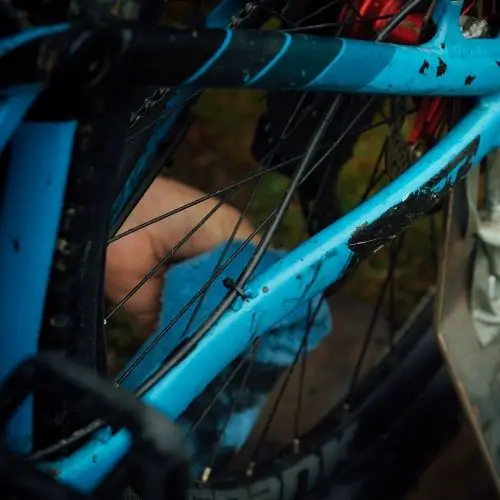
Mountain bikes, like anything over time, will eventually start to diminish in their performance. If you want to keep your mountain bike in tip-top shape without searching for separate upgrades, then a tune-up could be all your bike needs to get it riding like it’s brand new again.
A complete tune-up could run you over, or under $100, depending on your bike and who’s doing the maintenance, but if you don’t feel that your bike needs a complete tune-up and maybe just needs a little maintenance on certain components, then these are just some of the things you can do to keep your bike in mint condition.
I did get a chance to ask my local bike shop, and it sounds like a basic maintenance tune-up runs at $45.
Suspension
Keeping up with regular maintenance on your fork and shock could be just what you need if you feel that your riding has been a little shoddy lately.
Like many things in this article, the need to maintain your suspension is relevant to the terrain you’re riding, depending on the kind of environment you’re in, you may find you need to tune up your suspension more often, or less often.
Bottom Bracket
Cleaning and greasing your bottom bracket are essential to the well-being of your bike, regardless of the terrain. This maintenance work is one of the things that isn’t really dependent on your environment.
What matters here is that the bike is, like any other bike, going to need certain things maintained over time. This just happens to be one of those things that’s applicable to every rider.
If you fail to maintain this cleaning, you’ll start to notice that awful grinding sound every time you pedal. If you find you’re having that issue as of now, then this is most likely the culprit.
Brakes
Brakes are one of the most important components of your bike.
When you’re dealing with something as important as your brakes, it’s essential to remember that a brake bleed (if you have hydraulic brakes) can do magnificent things for your bike and its performance, not to mention the peace of mind that comes with knowing you’re not going to go flying off the trailside.
If you are running mechanical brakes, replacing worn or rusted wiring can make your bike feel like new again.
A new set of pads can do your bike wonders too!
Frequently Asked Questions
With all these upgrades available, people are definitely going to have questions about the different upgrades and what they could mean for your bike, well don’t worry, cause in this section we’re going to tackle some of the most frequently asked questions regarding bike upgrades and components.
When looking at the most cost-effective upgrades, we have to look at the ones, that either pay themself off in their ability to perform or offer us something that money just simply can’t buy. For these reasons, the most cost-efficient upgrade would be the handlebars, as we can see from the previous section, the usual price you’ll be looking at while buying new handlebars would be anywhere from 40-80 bucks, which makes them reasonably affordable. Along with affordability, this upgrade offers comfortability and security, assuring your bike not only feels good but also keeps you safe. For this reason, the best investment would be a fresh set of handlebars. You can’t put a price on security, and the comfortability is just an added bonus.
This question frankly depends on who you’re asking. Because it is not essential, everyone has their own opinions on it. What I can tell you is that if you can spare 10-20 bucks to keep your chain from dropping, then you’ll be thankful for this gadget later down the road. Especially if you find that you’re having to fix your chain far too often, then this gadget could save you quite a bit of time.
Going tubeless is definitely dependent on your terrain. If you find you’re riding smooth trails most of the time, and that flats don’t really seem to happen to you too often, then you should be good. However, if your terrain is bumpier, with more rocks and possible debris, then you should definitely consider going tubeless. This is especially true if you notice frequent flats due to your terrain. You could find that switching to tubeless could end up saving you some money down the road in avoided flats. It is worth mentioning that it is possible to still get flats while tubeless, but it is far less likely to happen and much better for rougher terrains.
Conclusion
With all of these upgrades listed here, it can seem a bit much. Remember that if you’re looking to upgrade your bike, take your time, and weigh out the possible pros and cons of each upgrade. Every bike is different, and most terrains are too. Don’t be in any rush to “pimp your ride”, as you can always go out for a ride and see how it feels after reading this.
Maybe you notice that the handlebars are too loose, or the tread on your tires might be a bit worn. Whatever it is, make sure to do your research, and find the upgrade that’s the best fit for you and your bike. If all seems well with your bike, then just remember the importance of scheduled maintenance, and keeping your bike’s performance to the best of its ability.
